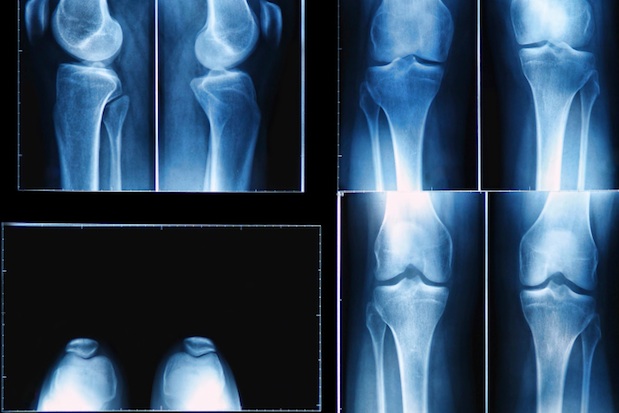Eighteen hundred years ago, Romano-Britons with a variety of medical conditions would have visited the healing temple at Lydney Park in Gloucestershire, with some of them drinking the iron-rich waters found there. One person left behind a small offering – perhaps in appreciation of a successful cure – in the form of a model forearm. Interestingly the fingernails on the hand are spoon-shaped – a feature that is associated with severe iron deficiency anaemia.
Examining an individual’s finger nails can still be very helpful in alerting doctors to a range of heart and lung problems in addition to anaemia, thyroid disease and some skin conditions. In addition we occasionally send off nail clippings to try and diagnose fungal infections.
Osteoporosis is now a fairly common condition that affects around three million people in the UK and some individuals being treated for osteoporosis have reported that the treatment used to reduce the risk of fragility fractures in their bones has also strengthened their nails. Moreover it has been suggested that the quality of an individual’s nails might correlate with the state of their bones due to similarities in the proteins found in both tissues.
Currently osteoporosis is diagnosed using Dual-energy X-ray absorptiometry (DXA scanning). But in a recent study reported by a company called Crescent Diagnostics, 619 patients undergoing DXA scanning also had finger nail clippings examined using a Raman spectrometer. Raman spectroscopy analyses molecular vibrations in a sample excited by a laser beam and the spectrum produced provides a ‘fingerprint’ by which the molecules within a sample can be identified.
According to the NICE the accuracy of DXA scanning in predicting major fragility fractures due to osteoporosis is around 67% – a figure very similar to that found among patients whose nails were examined using Raman spectroscopy and classified as being at ‘increased risk’ for osteoporosis. Moreover, combining nail assessment with DXA and a clinical risk review can improve the accuracy to 75%.
Nail analysis using Raman spectroscopy represents a very interesting new tool to identify individuals at risk of osteoporotic fragility fractures either on its own, or in combination with a DXA scan and a clinical risk assessment.






Comments